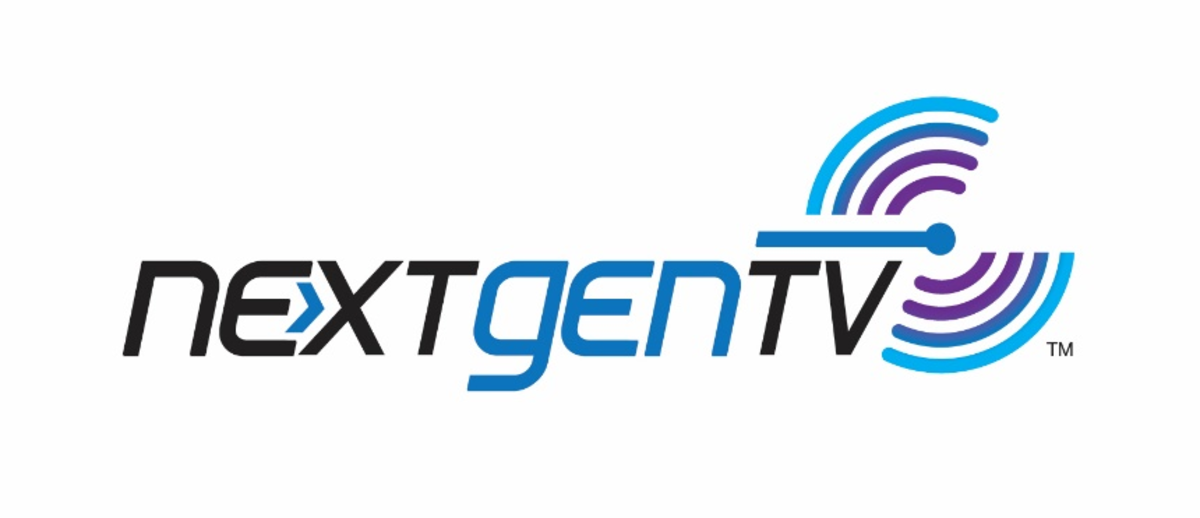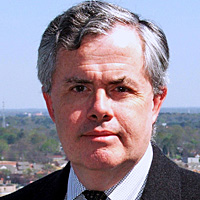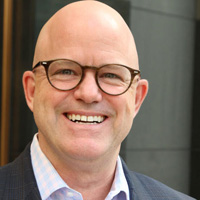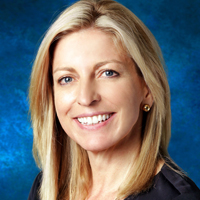
For NextGen TV, Cheaper Receivers, Bigger Markets And More HDR Are Next

More than five years after the ATSC 3.0 or “NextGen TV” digital television standard was approved by the FCC, broadcasters say their rollout of the new technology is ahead of the pace set by the original analog-to-digital transition of ATSC 1.0. NextGen TV signals are now up in 63 markets, hitting almost 60% of U.S. households, and six million compatible TV sets are in homes.
But after the initial rush to get early “lighthouse” stations on air, NextGen TV’s momentum has slowed as broadcasters have run into delays launching in the biggest markets. There are still only four consumer electronics manufacturers making compatible TV sets — Sony, LG, Samsung and Hisense — and no accessory devices have yet been officially certified to receive NextGen TV signals. And some early set-top boxes with 3.0 tuners that did come to market have lost functionality as stations have begun encrypting their signals to provide copy protection for high-value content.
Task Force Sought
NAB CEO Curtis LeGeyt and top station group executives including Nexstar CEO Perry Sook and Graham Media CEO Catherine Badalamente visited the FCC late last month to formally air their concerns about the rollout. An accompanying letter described a “stalled transition” and asked the FCC to both emphasize its support for the standard to CE manufacturers and create an ATSC 3.0 task force “to attack problems as they arise.”
The biggest problem, albeit not a new one, is a lack of available spectrum for both launching 3.0 in the biggest markets and fully exploiting the standard to offer new services in any market. That’s because unlike the 1.0 transition, broadcasters didn’t get any additional spectrum to launch 3.0, which the FCC deemed a voluntary standard.
Launching 3.0 first requires all the broadcasters in a market to work together to find a home for the existing 1.0 programming on one (or two) “lighthouse” station’s 6 Mhz channel, thus clearing it for 3.0 transmissions. This “channel-stacking” process is a complicated dance of shuffling the lighthouse station’s primary and secondary 1.0 program streams among multiple 1.0 “host” stations, with diginets from host stations sometimes switching sticks in order to create the most efficient 1.0 multiplexes across the market. In addition to some fancy engineering and investment in new MPEG-2 encoders, the process can also involve lengthy business negotiations between stations.

Jeff Birch
“It’s the same stumbling block in every market, and that’s divvying up the spectrum we’ve got to be able to accommodate everybody and all of their subchannels,” says Jeff Birch, VP engineering, CBS Television Stations. “And I’m not laying this at the FCC’s feet. In some of the markets, we’ve been able to make it happen, and it’s been a collective effort on the part of every broadcaster in every market.”
The channel-stacking problem is most acute in large urban markets, which tend to have both the most stations and the most diginets per station. Four of the top 10 DMAs—New York, Chicago, Philadelphia and San Francisco—have yet to launch 3.0. Los Angeles and Dallas are on-air with 3.0, but without all of the “Big Four” networks.
“If you count up all of the program streams in the New York market and try to carve out enough space to get at least one or two ATSC 3.0 sticks, and move everything from those sticks elsewhere, the math doesn’t work,” Birch says.
Nonetheless, he is hopeful that at least one New York station will begin broadcasting 3.0 this summer, with at least some of the stations participating.
Persistent Spectrum Crunch

Dave Folsom
Once the 1.0 channel-stacking is complete in market, broadcasters still face a spectrum crunch with their new 3.0 product. That’s because all five or six stations involved are sharing one 6 MHz channel. Setting the modulation scheme of the 3.0 signal to replicate the existing 1.0 coverage in a market generally gives a total payload of anywhere from 24.5 megabits per second (Mbps) to 29 Mbps depending on a market’s characteristics, says Dave Folsom, CTO for broadcast consortium Pearl TV.
Most 3.0 markets on-air today are working with around 24.5 Mbps. That gives each station around 4.5 Mbps, enough to do 1080p/60 video with high dynamic range (HDR). Folsom says that is a meaningful improvement in picture quality over the 720p and 1080i SDR currently offered in 1.0, particularly given the efficiency of HEVC encoders from vendors like Ateme, Harmonic and Synamedia.
“That might sound like a low number, but remember, HEVC is four times more efficient than MPEG-2,” says Folsom, who adds that the 3.0 signals have superior receivability over 1.0 due to the improved multipath performance of COFDM modulation.
But 4.5 Mbps is not enough for the 4K HDR format offered by streaming competitors like Netflix as well as by broadcast networks themselves through their own apps, such as Fox Sports. Over-the-air 4K HDR would require at least 2.5 to 3x more bits for an acceptable picture, Folsom says, and perhaps more for live sports.
Different, But Same?
Broadcasters could differentiate their 3.0 product by offering unique content, but they face a regulatory constraint there as well. To protect the interests of both 1.0 viewers and cable operators, stations transmitting in 3.0 are required by the FCC to offer “substantially similar” programing on their 1.0 signal, a de facto simulcasting rule that sunsets this July but is expected to be extended by 3.0 insiders.

Joe St. Jean
“I think the FCC is going to extend it, and we think that’s the right thing to do, and I think they’re going to look to change that sunset date to something plus-three years or plus-five years, which makes a lot of sense for us, because with the volume of sets out there we certainly don’t want to drop the 1.0 audience on an OTA basis,” says Joe St. Jean, EVP technology policy and standards, Paramount. “We need to give it some time where everyone is starting to manufacture in 3.0 before you can even think about sunsetting [1.0]. And then of course, the cable folks will need to convert to 3.0 at some point if it’s going to be differentiated.”
Broadcasters aren’t prohibited by the “substantially similar” rule from offering the same programming in 4K on their 3.0 broadcasts, but with channel-sharing they don’t have the available bits to do so. That’s why the NAB urged the FCC to speed up the entire process of shifting completely to the new standard. It called the dual transmission of the same programming in both 1.0 and 3.0 “wasteful” and noted the growth of 4K across streaming platforms. It said 4K will soon be considered “table stakes” for getting rights to high-value content like live sports and that broadcasters risk losing them to “pay TV platforms that are permitted to employ more advanced technologies.”

Sam Matheny
“If you want to unlock the true capability of the NextGen TV standard, you need to get past the point where we are, which is a lighthouse station and a whole bunch of channel-sharing,” says NAB CTO Sam Matheny. “We need to get to full deployment.”
Bet On HDR, Not 4K
What wasn’t mentioned in the NAB’s letter is that broadcast networks aren’t yet even delivering 1080p HDR feeds to their O&Os and affiliates. That is despite the fact that some are producing a bevy of content in the format, including all NFL coverage on Fox and CBS this past season (Fox used it to create upconverted 4K HDR for its app and pay-TV partners, and downconverted it for 1.0 distribution).
Folsom says none of the 3.0 stations he’s worked with are yet receiving native 1080p HDR network content. Instead, they are providing their 720p or 1080i SDR 1.0 feeds to the lighthouse station in the market, usually at a high-quality contribution rate of around 20 Mbps. The feeds are then converted to 1080p before they are fed into an HEVC encoder for 3.0 broadcast.
Stations owned by Sinclair Broadcast Group, which represent a large chunk of existing 3.0 sticks, are upconverting the SDR feeds to HDR using advanced HDR by Technicolor. That technology, formally known as SL-HDR1, dynamically adjusts the brightness, contrast and color saturation on a frame-by-frame basis. Other 3.0 stations are simply transmitting 1080p SDR.
Folsom says there are myriad issues relating to networks’ slow pace in providing 1080p HDR, including rights issues and upgrades that still need to be made to broadcast centers, distribution networks and commercial insertion systems at local stations. He says Fox, with its new fully IP, SMPTE 2110-compliant plant in Tempe, Ariz., is probably the furthest along.
“We have the bandwidth to do 1080p 60 HDR, and that is gorgeous,” Folsom says. “If the networks would only give us HDR, and I think they’re working on it, then that would be a real gamechanger.”
After upgrading its satellite IRDs from AVC to HEVC encoding during the C-band auction process several years ago, CBS is fully capable of delivering 1080p HDR to its affiliates. The network also has sufficient capacity to deliver both an SDR and HDR feed for some time, which it would probably do for an interim period to give stations time for necessary upgrades.
“We can deliver it to the affiliates’ door,” St. Jean says. “But they have to upgrade their plant in their station to support it, and that’s really where the heavy lift is going to be.”
None of the CBS-owned stations are fully ready to handle a 1080p HDR signal with their current infrastructure, Birch says. While fully supporting 1080p HDR doesn’t require a 2110 plant, it may mean upgrading to 3-gig HD-SDI in some cases. In the interim, CBS would probably take a phased approach as it did with the initial conversion from SD to HD, first allowing “pass-through” of a complete network signal and then creating “islands” of 1080p HDR equipment to support some local functions.
“I see that same scenario here, where we just get it from the IRD to the transmitter first,” Birch says. “Then we’ll have to figure out how to upconvert some local content so it looks like HDR and get that out to the transmitter, and then eventually rebuild the station to handle it all natively, which will not be cheap.”
Considerable Costs
Birch says a “very crude pass-through” would probably cost $100,000 to $150,000 per station. Before spending more on things like switchers and cameras to support HDR and/or 4K there would have to be “a philosophical conversation” about how much local stations are really going to change their operations for 3.0.
“Because will I do local news in 4K HDR in the near future?” Birch says. “Probably not. Maybe my live infrastructure doesn’t change that much, but my commercial playout and my network pass-through has to change. You’re still probably looking at $1 million a station to do some of this.”
Overall, Birch says there is a much greater difference in picture quality between SDR and HDR than there is between 1080p and 4K.
“We want to give the viewer the biggest bang for their buck,” Birch says. “The real grabber is HDR.”
St. Jean concurs and says that 4K is more of a “marketing effort” with consumers.
“I don’t think anyone really intends to deliver 4K anytime soon,” he says. “And quite frankly, I’m not sure there’s a need to, when the TV set is doing such a good job of upconverting.”
Stretching The Receiver Pipeline
As the NAB emphasized in its letter to the FCC, more NextGen TV receivers at lower prices need to come to market for the new standard to be successful. Pearl TV has been working on that issue with its “FastTrack to NextGen TV” program, partnering with semiconductor supplier MediaTek to develop a “reference platform” for high-volume TV manufacturers that includes a TV System on Chip (SoC), ATSC3 demodulators and software stack. That saves individual set-makers from investing in their own engineering work.
Of course, there are millions of existing 4K- and HDR-capable TVs in living rooms across the country that don’t have 3.0 tuners. Offering consumers a low-cost accessory device, such as a set-top receiver, would be the most cost-effective way to turn them into NextGen TV sets. There is also a strong demand for low-cost set-top receivers in countries like Jamaica and Trinidad and Tobago that have recently adopted 3.0.
In that vein, Pearl recently released a detailed set of requirements for a “Stand-Alone Receiver” that includes both a 1.0 and 3.0 tuner and connects to a legacy TV set via HDMI. It lists all technical requirements that need to be implemented under the standard including content protection under the A3SA [ATSC 3.0 Security Authority] specification, which involves encrypting content to avoid unauthorized duplication.
The encryption of 3.0 signals has become a thorny issue for some purchasers of early 3.0 set-tops, who initially used them to receive 3.0 lighthouse stations but then could no longer watch them after the stations began implementing A3SA encryption last year. Some viewers have complained about the issue on TV-focused message boards like AVS Forum, and even speculated that broadcasters are trying to create a pay TV service with 3.0.
Folsom notes that such encryption is standard practice with most internet media today including YouTube videos and is generally invisible to the consumer, and that it was always part of the 3.0 standard. He adds that there are no existing NextGen TV sets that have a problem receiving encrypted signals, and that Pearl is working with at least one set-top maker to help them address their issue.
“Some manufacturers put out receivers that did not have decryption capability in them, and when those receivers first were announced, there was at least one manufacturer that put a receiver out that did not have decryption capability in it,” Folsom says. “We warned that company that encryption was coming. So, there is now a vocal audience out there that said wait, you’re encrypting.”
Certifying such accessory devices to actually be NextGen TV-compliant and thus allow manufacturers to use the “NextGen TV” logo to indicate as much would obviously avoid such problems in the future. Pearl announced earlier this month that software firm Tolka is the first company to officially enter their “Accessory Device Certification Program,” which involves NextGen TV certification services and tools provided by Resillion (formerly Eurofins Digital Testing) on behalf of the CTA and the NAB.
“It speaks to the trust of having that logo,” Matheny says. “I’m buying a device designed to leverage the new standard, as opposed to something that could break on you later.”

Anne Schelle
The Tolka software stack, designed specifically for accessory receivers, was demonstrated at CES 2023 in January as one of several products being “next for certification” under Pearl’s FastTrack program. Pearl TV Managing Director Anne Schelle is hopeful that Tolka will have a fully certified product ready in time for the NAB Show in April. She adds that Pearl is working with several other vendors in the accessory device program, which includes rounds of pre-testing at its lab in Bradenton, Fla. A big priority is keeping the engineering costs down for smaller companies that might be selling sub-$50 products like USB accessories, while also making sure consumers don’t get burned by a non-compliant product.
“Our goal is to get them all funneled through, so they’re getting logoed this year,” she says.
































Comments (3)
Paul Greeley says:
February 23, 2023 at 10:57 am
There is almost no consumer awareness of NextGen TV in the market place. Test for yourself. Go into any store that sells TVs and ask about a TV with NextGen TV technology. They have no idea. Until consumers know about the benefits of it, and buy TVs equipped with it, it may not make any difference how many stations have it.
tvn-member-3011604 says:
February 23, 2023 at 4:44 pm
Take a lesson from failed technologies like AMAX (a great idea) and failing technologies like HD Radio (not so great). Wait too long, offer no incentives to have it included in new products or adequately publicize it and it ends up becoming a paragraph in broadcast history books and forgotten.
Nat Hill IV says:
February 24, 2023 at 9:52 am
This may be the best ATSC 3.0 article I’ve ever read. The industry is finally offering some degree of candor regarding ATSC 3.0’s future plans.
I really like the four quality pictures (3 1080p and 1 720p) 3.0 pictures I’m getting from Indianapolis. All on one frequency. A second frequency has three PBS programs (2 1080p and 1 480) signals. Hopefully the ATSC 3.0 people will work with SiliconDust to allow my tuner to continue to work in the future if the signals are encrypted.
I personally think ATSC 3.0 is doomed if the industry can’t quickly talk somebody into producing a cheap tuner and start explaining to the public what it can do for them. It’s an extremely well kept secret. Nobody I know outside of forums has even heard of it.
The two previous comments articulate that sentiment better than I did.